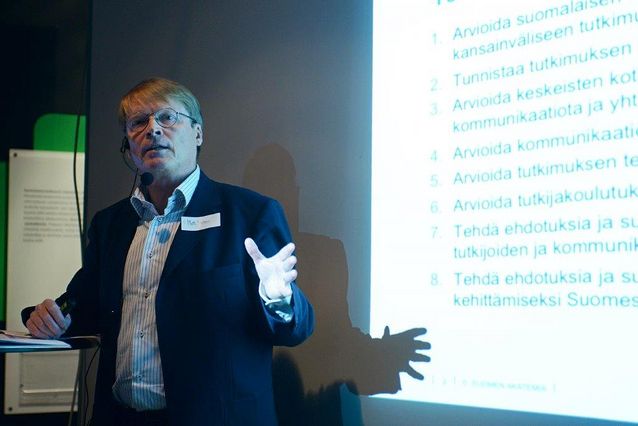Matti Sintonen
Matti Tapani Sintonen
Born September 20, 1951, Kuusankoski
Baccalaureate, Huntington North High School, Indiana, USA 1969 and Kouvola Lyceum 1971
Master of Arts 1976, Licentiate 1977, PhD 1984 (theoretical philosophy), University of Helsinki
Master of Social Science 1979 (practical philosophy), University of Helsinki
Docent 1985– (practical philosophy), universities of Helsinki and Turku
Director 2014–,Department of Philosophy, History, Culture and Art Studies
Professor of theoretical philosophy (acting) 2004–14, University of Helsinki
Professor of philosophy (particularly the philosophy of science) 1991–2010, University of Tampere
Deputy director of the Department of Philosophy 2008–10, University of Helsinki
Professor of philosophy, particularly logic and the theory of knowledge (acting)2003–04, University of Tampere
Professor of practical philosophy (particularly the methodology of social sciences) 1984–86, 1990–92, 1996–2000, University of Helsinki
Advanced research fellow 2000–01, Senior research fellow 1984–89, research fellow 1982–84, Academy of Finland
Head of the Department of Practical Philosophy 1985, 1999–2000, University of Helsinki
Professor of theoretical philosophy (acting) 1989–90, University of Turku
Research associate in practical philosophy (particularly the methodology of social sciences) 1976–91, University of Helsinki
Visiting Fellow, University of Helsinki Clare Hall Fellowship 1997–98, Cambridge
Visiting Fellow 1993–94, Darwin College, Cambridge
Visiting Fellow 1983–84, 1997–98, Department of Philosophy and the Department of Philosophy and History, University of Cambridge
Visiting Research Associate, 1986–87, Boston Center for the Philosophy and History of Science, Boston UniversityFlorey Student 1977–79, Queen´s College Oxford
Research themes: the philosophy of science, particularly the problematic of scientific explanation and invention, the philosophy of biology, the philosophy of social sciences.
Publications, research projects and other academic activity
Editor, editor-in-chief, member of the editorial board in the following journals:
Ajatus, Science & Technology Studies, Behavioral and Brain Science, Synthese, Acta Philosophica Tamperensia, Polish Journal of Philosophy Theoria, European Journal for Philosophy of Science
Honours and awards:
ASLA Fulbright Senior Grant, Boston Center for the Philosophy and History of Science, Boston University, 1986–87
Chancellor’s special award for best Master’s thesis, granted in celebration of 35 years of the Faculty of Social Sciences, 1980
Best Master’s Thesis Award, Faculty of Arts 1975, Faculty of Social Sciences 1979
Member of the Finnish Academy of Science and Letters
Photo: Ida Pimenoff
Written by Matti Sintonen (Tiia Niemelä ed.)
Translated by Matthew Billington

